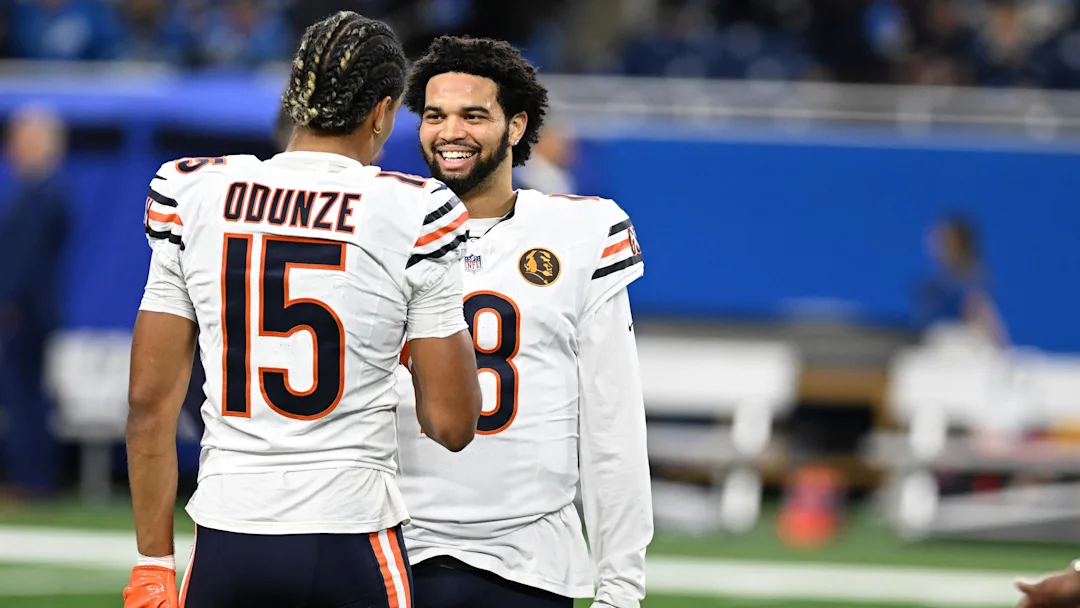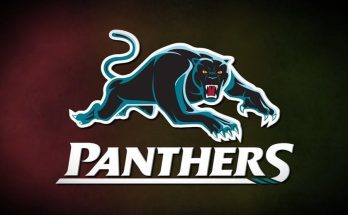The Chicago Bears’ 2024 rookie class entered the NFL with high hopes, expectations, and a renewed sense of optimism surrounding the team’s future. After a tumultuous 2023 season, where the Bears struggled to make significant progress under the leadership of head coach Matt Eberflus, the franchise leaned heavily on its 2024 draft class to provide a much-needed injection of talent, energy, and potential to a roster that had been decimated by a lack of consistency and depth in previous years.
Fast forward to the conclusion of the 2024 season, and the results of Chicago’s rookie class have become a mixed bag, earning the Bears a frustrating and lackluster ranking among the league’s top rookies after one season. Despite the team’s bold moves in the draft, with many high-profile selections, the Bears’ draft haul failed to make the transformative impact the franchise desperately needed.
For many years, the Chicago Bears have experienced cycles of rebuilding, only to fall short of sustained success, and it appeared that 2024 could be the year that broke the trend. With a top pick in the draft, they selected a quarterback, a position of paramount importance, signaling their commitment to a new era of football under the guidance of their top brass. However, it’s clear now that some of the optimism surrounding the Bears’ rookie class, which included a mix of offensive and defensive prospects, has not yet translated into tangible results on the field.
The 2024 rookie class featured a blend of high-potential players who were expected to immediately contribute. However, a series of disappointing performances, injury setbacks, and a lack of significant development across the board have left Bears fans frustrated, wondering whether their team’s future is as bright as once thought.
Looking back at the draft selections made by the Bears, the glaring issue lies in their inability to maximize the potential of these young players in year one. Not all rookies were expected to start immediately, but there was an understanding that they would have an impact. Yet, as the 2024 season came to an end, many of the team’s draft picks failed to meet expectations in a major way.
Let’s start with the highest-profile pick: the quarterback. The Bears selected a promising young quarterback, considered to be one of the top prospects available, with the hopes that he would solve the team’s long-standing issues at the most important position on the field. But throughout his rookie season, it became clear that this was not the immediate fix the team had envisioned. His performances were inconsistent, as he struggled to adjust to the speed and complexity of the NFL. While it’s still early to completely write off his career, his first year was filled with flashes of promise interspersed with moments of utter frustration. Inaccurate throws, questionable decision-making, and a lack of a clear connection with his receivers hampered his development. More worrying, though, was his inability to elevate the play of his teammates, an essential trait for any successful quarterback. By the end of the season, his ranking among rookie quarterbacks was disappointing at best, a far cry from the expected instant success.
What added to the frustration was the lack of progress made by other key draft selections. Offensive line, which had been an area of weakness for years, was one of the Bears’ priorities in the draft. The team selected a promising young tackle who was expected to shore up the trenches and protect the quarterback. Unfortunately, his rookie season was marked by a series of growing pains, and he struggled to adapt to the speed and strength of NFL defensive lines. Whether it was an inability to handle pass rushers or being overwhelmed by the sheer physicality of the NFL, the rookie lineman was unable to make the immediate impact many anticipated. He gave up sacks and penalties at an alarming rate, and while there were some bright moments, they were few and far between. His inconsistency made it difficult for the Bears’ offense to find any rhythm, as the protection around the quarterback remained subpar.
Adding to the offensive struggles was the performance of the team’s running back, another high draft pick. Known for his explosiveness and versatility in college, the Bears were hopeful that he would bring an added dimension to the offense. However, his rookie year was marred by injury, a lack of patience behind the line of scrimmage, and an inability to read blocking schemes. He showed flashes of his talent but rarely put together an extended stretch of success. His rookie season statistics were underwhelming, and his inability to consistently pick up positive yards and contribute to the team’s overall offensive identity was frustrating to watch.
On the defensive side of the ball, the Bears made some notable selections, aiming to bolster their defense after years of mediocrity. The team targeted players who could be immediate contributors, especially in a division that had seen rising offensive talent from opponents. However, the defensive rookies also failed to live up to expectations. While some were given a chance to start, their performances in crucial games left much to be desired. One linebacker, in particular, was expected to be an immediate impact player with his high motor and physicality. Yet, throughout the season, he struggled to shed blockers, missed key tackles, and had difficulty making a noticeable impact in key moments of games. He often found himself out of position, and while his effort was never in question, his performance was erratic. Another defensive back, who was drafted for his ability to make plays in coverage, also had an underwhelming rookie campaign. In a passing-heavy NFL, where defensive backs are expected to be highly skilled and sharp, he struggled to stay with receivers, and his coverage issues were often exploited by opposing quarterbacks.
It’s important to note that part of the issue for these rookies may have been the lack of a cohesive and stable coaching environment. The Bears’ coaching staff, while experienced, has faced its own set of challenges. Head coach Matt Eberflus, while touted as a defensive-minded coach, has yet to bring the kind of discipline and structure that a team needs to succeed consistently. This inconsistency in the coaching staff likely contributed to the struggles of the rookies, as they were forced to adjust to a constantly changing team culture and scheme, without the stability that a rookie needs to develop properly.
Another factor in the rookie class’ underperformance was the injury bug that seemed to hit the team harder than most. Injuries to key players, both rookies and veterans alike, disrupted the chemistry of the offense and defense. Many of the rookies were unable to play at full strength throughout the season, and others were sidelined for extended periods, preventing them from making the kind of immediate contributions the team had hoped for. The inability to stay healthy led to further setbacks, stalling any potential growth or momentum they could have gained as the season progressed.
The frustration surrounding the 2024 rookie class stems not only from individual players’ performances but also from the collective sense that the Bears’ rebuilding process is still far from complete. Fans had hoped that the rookies would be able to expedite this process, providing instant upgrades and building blocks for future success. Instead, the Bears find themselves once again staring at a team that’s mired in mediocrity, with little to show for their high expectations.
As the team looks ahead to 2025, there are questions about how the franchise will proceed with its rebuilding efforts. The 2024 rookie class still has time to develop, and it’s far too early to make sweeping conclusions about the future of these players. However, based on their first season, the ranking of the Bears’ rookie class is disappointing. They were supposed to be the catalysts for change, the players who would turn the franchise around and bring hope to a fanbase that has seen little sustained success in recent years. Instead, the Bears’ rookie class serves as a reminder of how difficult it is to build a championship team in the NFL, where even the most promising young players can falter in their first season. The franchise must continue to focus on its development, coaching, and player evaluation to ensure that this class doesn’t become another missed opportunity in the long history of the Chicago Bears’ rebuilding efforts.



